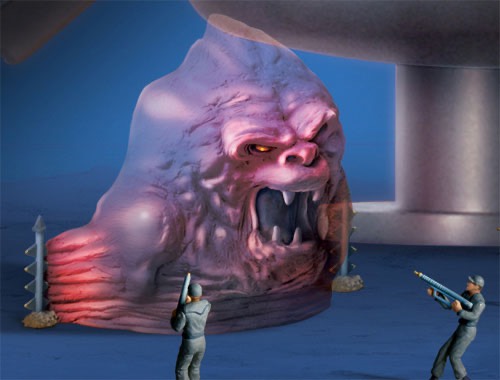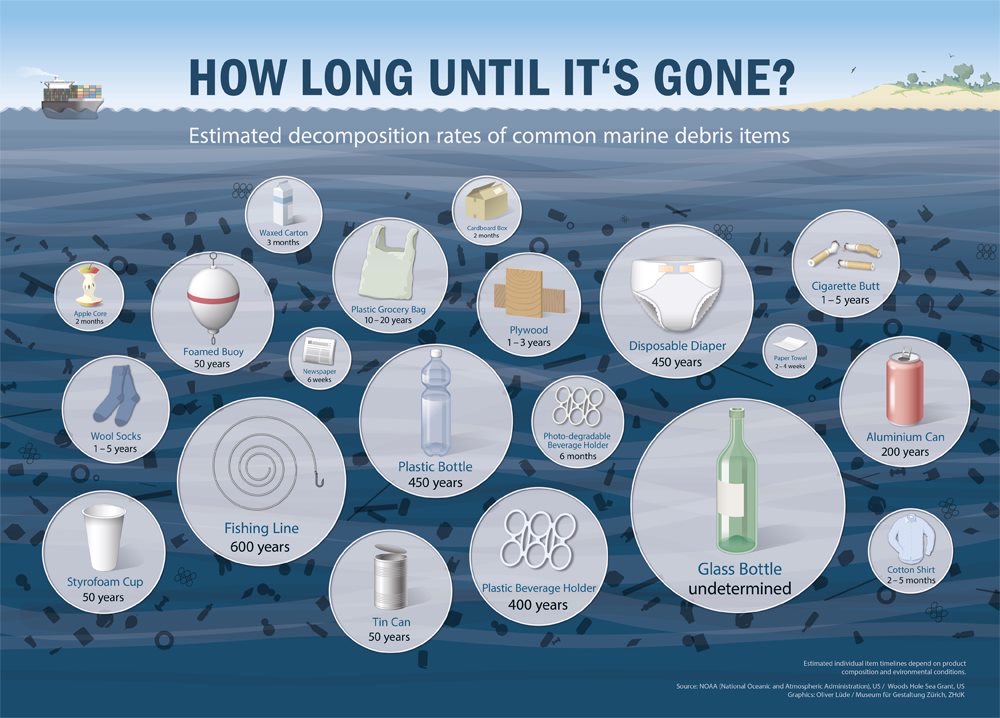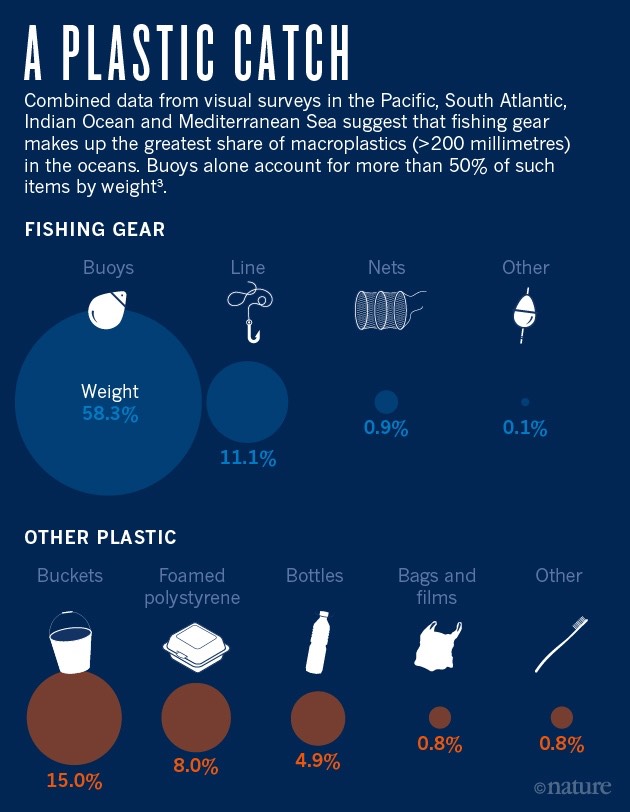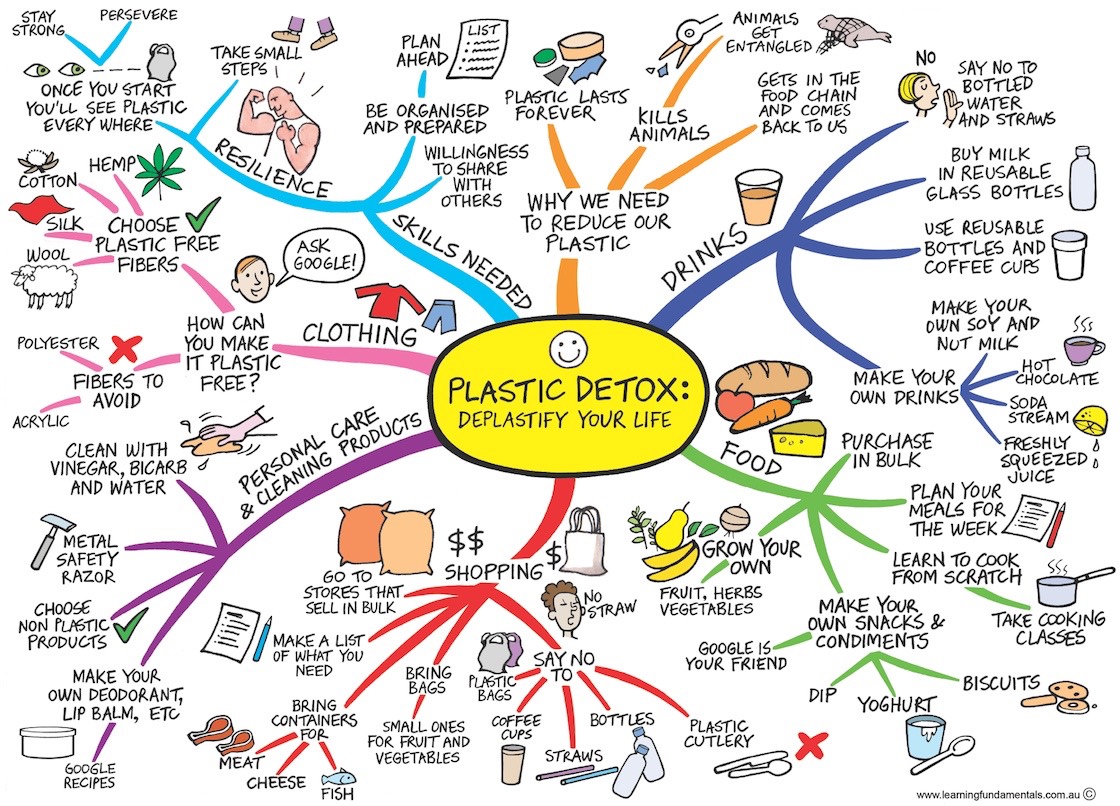http://www.sciencedaily.com/releases/2015/10/151022111337.htm
In a new study, researchers from the Alfred Wegener Institute, Helmholtz Centre for Polar and Marine Research (AWI) show for the first time that marine litter can even be found at the sea surface of Arctic waters. Though it remains unclear how the litter made it so far north, it is likely to pose new problems for local marine life, the authors report on the online portal of the scientific journal Polar Biology. Plastic has already been reported from stomachs of resident seabirds and Greenland sharks.
Plastic waste finds its way into the ocean, and from there to the farthest reaches of the planet -- even as far as the Arctic. This was confirmed in one of the first litter surveys conducted north of the Arctic Circle, carried out by an international research team from the Alfred Wegener Institute, Helmholtz Centre for Polar and Marine Research (AWI) and Belgium's Laboratory for Polar Ecology. The researchers presented their results in an article released on the online portal of the journal Polar Biology.

In order to gauge the level of pollution, the researchers took advantage of an expedition that brought the research icebreaker Polarstern to the Fram Strait, the area between East Greenland and Svalbard. In July 2012, AWI biologist Dr Melanie Bergmann and her team searched for litter floating on the sea surface from the ship's bridge and by helicopter, maintaining a "litter watch" for a combined distance of 5,600 kilometres. "We found a total of 31 pieces of litter," reports Bergmann.
Although this number may sound low, it confirms that there is indeed litter floating in the remote Arctic Ocean. "Since we conducted our surveys from the bridge, 18 metres above sea level, and from a helicopter, we were only able to spot the larger pieces of litter. Therefore, our numbers are probably an underestimate," the marine biologist explains. It is well-known that, with time, plastic breaks down into small fragments at sea, which can be detected properly only by analysis of net tows.
The plastic litter reported from the Fram Strait could be leaking from a sixth garbage patch, which may be forming in the Barents Sea according to computer models. Such accumulation zones are created when large amounts of floating plastic debris are caught by ocean currents and concentrate in the centre of gyre systems.
We currently know of five garbage patches worldwide; the sixth patch in the Barents Sea is most likely in the early stages of formation. Bergmann believes it may be fed by the densely populated coastal regions of Northern Europe. "It is conceivable that part of that litter then drifts even farther to the north and northwest, and reaches the Fram Strait," states the AWI biologist, adding, "Another cause for litter in the Arctic could be the retreat of the Arctic sea ice. As a result more and more cruise liners and fish trawlers are operating further north, following the cod. Most likely, litter from the ships intentionally or accidentally ends up in the waters of the Arctic. We expect this trend to continue."
In a previous study, Melanie Bergmann analysed photographs from the deep Arctic seafloor for signs of plastic, glass and other types of litter. Her conclusion: in the time frame of ten years the amount of litter in the deep sea has doubled with densities in a similar range to those from southern Europe. In fact, the litter density on the deep seafloor of the Fram Strait is 10 to 100 times higher than at the sea surface. "On the deep Arctic seafloor, we found an average of 2.2 to 18.4 pieces of litter per kilometre of our route. This indicates that the deep seafloor may be the ultimate sink for marine litter," Bergmann suggests.
The litter floating in the Arctic is particularly detrimental to seabirds, which feed at the sea surface. A recent study from the nearby Isfjorden fjord on Spitsbergen showed that 88 percent of the northern fulmars examined had swallowed plastic. These birds spend their entire life at sea. Even Greenland sharks are swallowing plastic litter: researchers found plastic litter in the stomachs of up to eight percent of the sharks caught south of Greenland.
Bergmann notes that the litter data for her latest study were collected in the course of a study on marine mammals and seabirds on board of RV Polarstern: "We just took advantage of these surveys to count marine litter." Scientists refer to chances such as this one, where valuable scientific data is gathered during expeditions of a different purpose, as "ships of opportunity." "Since it's reasonably easy to count litter from a ship in motion, it makes sense to use 'ships of opportunity' more often in the future to help us to learn more about the global distribution of floating litter, especially in remote areas. This could be done during patrol flights and voyages with research ships, cruise ships, coast guard, merchant and fishing vessels," adds Bergmann.
Plastic Found to Account for the Majority of Marine Microlitter Accumulating in the Food Chain
NYC waters are teeming with plastic particles, study finds
Nanoparticles David Suzuki
European Seafloor Survey Reveals Depth of Marine Litter Problem
It is well documented that many harmful chemicals concentrate on organic particles suspended in water and within marine sediments by adsorbing (adhering) to the particle’s surface. Recent studies now focus on the fact that plastic particles floating in the ocean also serve as concentrating and transport devices for environmental pollutants; some studies, in fact, indicate that plastics may be better concentrators than natural sediment. The United Nations Environment Program has declared plastic marine debris and its ability to transport harmful substances to be one of the main emerging issues in our global environment. The physical characteristics of the surface of plastic (hydrophobic, low polarity) attract many persistent organic pollutants (POPs) —polychlorinated biphenyls (PCBs), polycyclic aromatic hydrocarbons (PAHs), and dichlorodiphenyl trichloroethane (DDTs), and other organichlorine pesticides — that share similar chemical properties ... micro-plastic pellets and fragments are serving as concentrating devices for pollutants, which raises toxicological concerns for marine organisms that commonly ingest micro-plastics. It is also important to note that these studies, through various experimental controls, were able to prove that plastic resin pellets were adsorbing the pollutants directly from the surrounding seawater (not the air or sediment).
Source Plastic Debris in the California Marine Ecosystem, 2011
"Rapid development of technology, swelling population and growing consumption of resources from crops to metals have expanded humanity's impacts, particularly after 1950 or so, an inflection point some have dubbed the "Great Acceleration.” People have created long-lasting new materials, ranging from copper alloys to plastics that will form long-lived, so-called "technofossils." Enough concrete has been made by now to cover every square meter of the world in a kilogram of the building material. Sufficient plastic is currently manufactured each year to weigh as much as all seven billion–plus humans on the planet. People move nearly three times as much rock and dirt via mining than the amount that travels with water through all the world's rivers. Modern chemistry has even liberated civilization from the natural nitrogen cycle that has prevailed for the last 2.5 billion years. And tiny soot particles left over after burning coal, oil and natural gas now can be found in sediments from tropical lakes to the middle of the Pacific Ocean, a permanent smudge on the geologic record."
March 13, 2016 Germany: Hamburg has banned single-serve coffee pods and single-use plastic water bottles. The list of regulated items covers many other sources of environmental pollution including plastic water bottles, disposable cutlery, paint containing biocides, and chlorinated cleaning products. Hamburg also plans to increase the number of electric vehicles in the city's fleet. Read more here.
http://www.nature.com/articles/srep23501
"Most synthetic polymers (polyethylene, polypropylene) are buoyant in waters while other (high-density polyethylene, polyethylene terephthalate) may sink (13). The torpid degradation of the large plastic items, will result in the formation of small fragments (<5 mm); microplastics (14). Both plastics (15, 16, 17) and microplastics (18, 19, 20, 21) have adverse effects on the marine biota. They may collocate with microorganisms, invertebrates and microbial communities22, and even form plastiglomerates (23)."
http://www.sciencedirect.com/science/article/pii/S0269749113001140
"The presence of microplastics in myctophid fish and Hooker's sea lion and fur seal scats suggest microplastic transfer through pelagic food chains: microplastics–zooplankton–myctophid fish-Hooker's sea lions/fur seals. Such lower trophic organisms therefore represent a vector for microplastic transfer and their associated contaminants.
Microplastics may not only affect species at the organism-level; they also have the capacity to modify population structure. Species which were once restricted by a lack of hard substrate, such as the marine insect H. Sericeus, are now able to proliferate. This may be applicable to a wide range of organisms with potential impacts on ecosystem dynamics.”


Organic fertilizer as a vehicle for the entry of microplastic into the environment
"The contamination of the environment with microplastic, defined as particles smaller than 5 mm, has emerged as a global challenge because it may pose risks to biota and public health. Current research focuses predominantly on aquatic systems, whereas comparatively little is known regarding the sources, pathways, and possible accumulation of plastic particles in terrestrial ecosystems. We investigated the potential of organic fertilizers from biowaste fermentation and composting as an entry path for microplastic particles into the environment.
Particles were classified by size and identified by attenuated total reflection-Fourier transform infrared spectroscopy. All fertilizer samples from plants converting biowaste contained plastic particles, but amounts differed significantly with substrate pretreatment, plant, and waste (for example, household versus commerce) type.
In contrast, digestates from agricultural energy crop digesters tested for comparison contained only isolated particles, if any. Among the most abundant synthetic polymers observed were those used for common consumer products. Our results indicate that depending on pretreatment, organic fertilizers from biowaste fermentation and composting, as applied in agriculture and gardening worldwide, are a neglected source of microplastic in the environment. "Starting January 1, 2019, Jamaica will continue the anti-pollution movement promoted by over 60 nations around the world, the Ministry of Economic Growth and Job Creation, Daryl Vaz, said during a press conference Monday.
September 21, 2018 ... Jamaica bans single-use plastics
Starting January 1, 2019, Jamaica will continue the anti-pollution movement promoted by over 60 nations around the world, the Ministry of Economic Growth and Job Creation, Daryl Vaz, said during a press conference Monday.
Jamaica joins other culturally and environmentally sensitive nations recognizing that plastic is a nuisance that damages tourism as well as breaks down to smaller and smaller pieces that enter the food chain and eventually become endocrine disruptors that damage the human body. Complete Jamaica article
Dominica is also set to ban single-use plastics January 1, 2019. Plastic straws, styrofoam and other single-use plastics will be banned from Dominica as of January 2019, the Caribbean nation announced. Read more on Dominica's single-use plastic ban here.
India Pledges to Eliminate Single-Use Plastic by 2022 Read complete article
An inclusive single-use plastic regulation was first researched and placed into political process in Greenfield, Massachusetts. The mayor there changed the election rules and stopped a successful citizen's initiative to regulate all single-use plastic at the point of public sales. That single-use plastic regulation is presented as an example on this website: Clearwater Biodegradable Packaging and Litter Reduction Law
A Troubling Discovery in the Deepest Ocean Trenches
In the Mariana Trench, the lowest point in any ocean, every tiny animal tested had plastic pollution hiding in its gut.

Begun October 17 2021